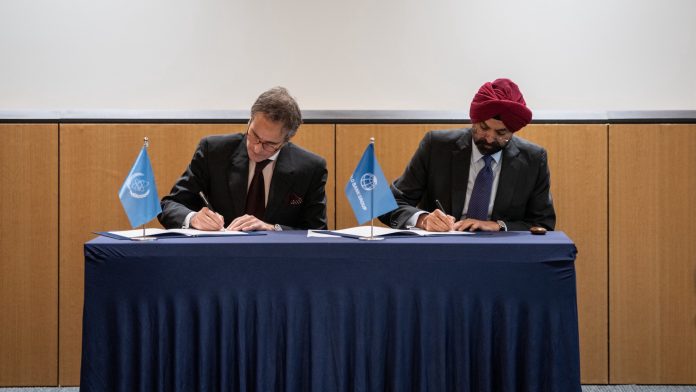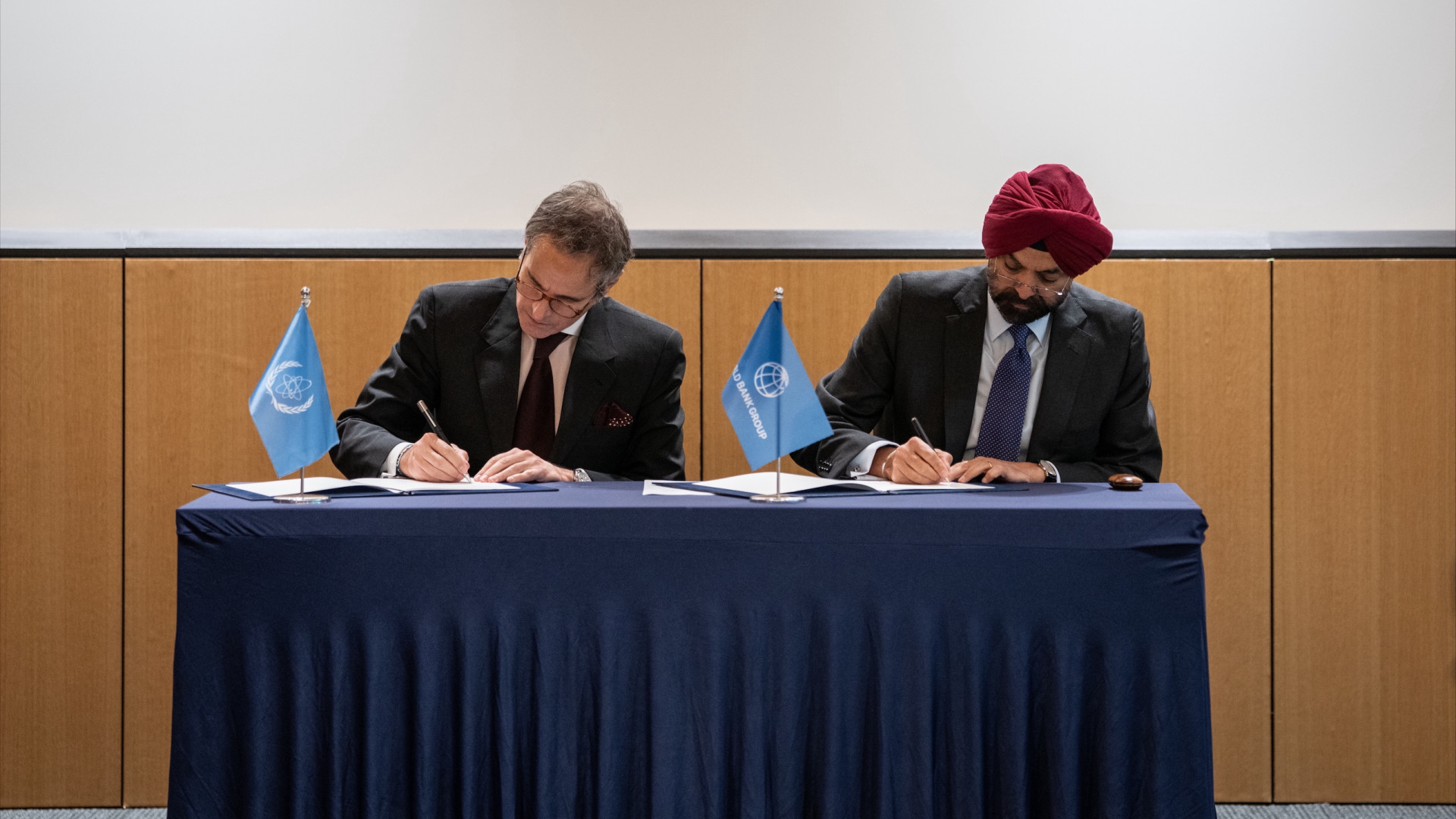World Bank and IAEA join forces to boost nuclear power in developing countries – Innovation News Network

World Bank Group and IAEA Collaborate to Promote Nuclear Power for Sustainable Development

Introduction
The World Bank Group and the International Atomic Energy Agency (IAEA) have entered into a strategic partnership aimed at advancing nuclear power as a key clean energy solution for developing countries. This collaboration represents the World Bank’s first significant engagement in nuclear energy in decades, highlighting a transformative approach to addressing energy poverty and climate change in line with the Sustainable Development Goals (SDGs).
Significance of Nuclear Power for Developing Nations
Access to affordable and reliable electricity remains a critical challenge for many developing countries, impeding progress in essential sectors such as healthcare, education, manufacturing, and digital infrastructure. With electricity demand in these regions projected to more than double by 2035, nuclear energy emerges as a vital component for sustainable development.
- Continuous Baseload Power: Nuclear energy provides stable and uninterrupted electricity necessary for hospitals, factories, and transport systems, reducing risks associated with energy interruptions.
- Low Carbon Emissions: Unlike fossil fuels, nuclear power generates near-zero carbon emissions, supporting climate action goals under SDG 13 (Climate Action) while fostering economic growth (SDG 8).
Addressing Soaring Energy Needs with Scalable Solutions
The World Bank’s electrification strategy prioritizes accessibility, affordability, and environmental sustainability, aligning with SDG 7 (Affordable and Clean Energy). Recognizing diverse national pathways to net-zero emissions, the Bank supports energy solutions tailored to each country’s development objectives and climate commitments.
Nuclear power complements renewable energy sources such as wind and solar by stabilizing electrical grids through frequency regulation and predictable output, contributing to resilient and modern energy systems.
Details of the World Bank–IAEA Agreement
The memorandum of understanding, signed by World Bank Group President Ajay Banga and IAEA Director General Rafael Mariano Grossi, formalizes ongoing collaboration focused on the safe, secure, and sustainable deployment of nuclear power in developing countries.
President Banga emphasized the critical role of reliable electricity for job creation and essential services, stating that nuclear energy is integral to meeting rising demand driven by technological advancement and development.
Three Pillars of Cooperation
- Knowledge Development: The IAEA will assist the World Bank in enhancing institutional expertise on nuclear energy, including safety protocols, radioactive waste management, fuel cycle technologies, and energy planning.
- Extending Reactor Lifespans: Many nuclear reactors worldwide are approaching their 40-year design limits. Safely extending their operational life offers a cost-effective method to sustain low-carbon power generation.
- Advancing Small Modular Reactors (SMRs): SMRs provide scalable, flexible, and lower-cost nuclear power solutions. Their compact design is particularly suitable for remote areas and smaller grids common in developing nations.
Global Impact and Future Outlook
Currently, 31 countries operate nuclear power plants, producing nearly 25% of global low-carbon electricity. Over 30 additional countries, many of which are developing nations, are collaborating with the IAEA to establish the infrastructure necessary for nuclear power adoption.
This partnership marks a pivotal shift in global energy policy, positioning nuclear energy as an essential tool for sustainable growth beyond advanced economies. By harnessing nuclear power, the World Bank and IAEA contribute directly to achieving multiple SDGs, including:
- SDG 7: Ensuring access to affordable, reliable, sustainable, and modern energy for all.
- SDG 8: Promoting sustained, inclusive economic growth and decent work.
- SDG 9: Building resilient infrastructure and fostering innovation.
- SDG 13: Taking urgent action to combat climate change and its impacts.
- SDG 3: Ensuring healthy lives and promoting well-being through reliable energy for healthcare.
Through this collaboration, the World Bank and IAEA aim to unlock nuclear energy’s potential to create a cleaner, more equitable, and sustainable energy future for billions worldwide.
1. Sustainable Development Goals (SDGs) Addressed in the Article
- SDG 7: Affordable and Clean Energy – The article focuses on expanding access to reliable, affordable, and sustainable energy through nuclear power in developing countries.
- SDG 9: Industry, Innovation, and Infrastructure – Emphasizes industrialization, infrastructure development, and innovation through nuclear technology and energy planning.
- SDG 13: Climate Action – Highlights nuclear energy’s role in reducing carbon emissions and supporting climate commitments.
- SDG 3: Good Health and Well-being – Reliable electricity is essential for healthcare facilities, as noted in the article.
- SDG 1: No Poverty – Energy access is linked to lifting populations out of poverty by supporting economic growth and industrialization.
2. Specific Targets Under Those SDGs Identified in the Article
- SDG 7 Targets:
- 7.1 – By 2030, ensure universal access to affordable, reliable, and modern energy services.
- 7.2 – Increase substantially the share of renewable energy in the global energy mix.
- 7.3 – Double the global rate of improvement in energy efficiency.
- SDG 9 Targets:
- 9.4 – Upgrade infrastructure and retrofit industries to make them sustainable, with increased resource-use efficiency and greater adoption of clean and environmentally sound technologies.
- 9.5 – Enhance scientific research and upgrade the technological capabilities of industrial sectors.
- SDG 13 Targets:
- 13.2 – Integrate climate change measures into national policies, strategies, and planning.
- SDG 3 Targets:
- 3.8 – Achieve universal health coverage, including access to quality essential healthcare services.
- SDG 1 Targets:
- 1.2 – Reduce at least by half the proportion of men, women and children living in poverty in all its dimensions.
3. Indicators Mentioned or Implied in the Article to Measure Progress
- SDG 7 Indicators:
- 7.1.1 – Proportion of population with access to electricity.
- 7.2.1 – Renewable energy share in the total final energy consumption.
- 7.3.1 – Energy intensity measured in terms of primary energy and GDP.
- SDG 9 Indicators:
- 9.4.1 – CO2 emission per unit of value added.
- 9.5.1 – Research and development expenditure as a proportion of GDP.
- SDG 13 Indicators:
- 13.2.2 – Total greenhouse gas emissions per year.
- SDG 3 Indicators:
- 3.8.1 – Coverage of essential health services.
- SDG 1 Indicators:
- 1.2.1 – Proportion of population living below the national poverty line.
- Additional Implied Indicators:
- Number of nuclear reactors operating or extended in developing countries.
- Deployment and operational status of Small Modular Reactors (SMRs).
- Measures of grid stability and baseload power availability.
- Safety and security compliance metrics for nuclear power plants.
4. Table of SDGs, Targets, and Indicators
| SDGs | Targets | Indicators |
|---|---|---|
| SDG 7: Affordable and Clean Energy |
|
|
| SDG 9: Industry, Innovation, and Infrastructure |
|
|
| SDG 13: Climate Action |
|
|
| SDG 3: Good Health and Well-being |
|
|
| SDG 1: No Poverty |
|
|
| Additional Indicators (Implied) |
|
|
Source: innovationnewsnetwork.com








